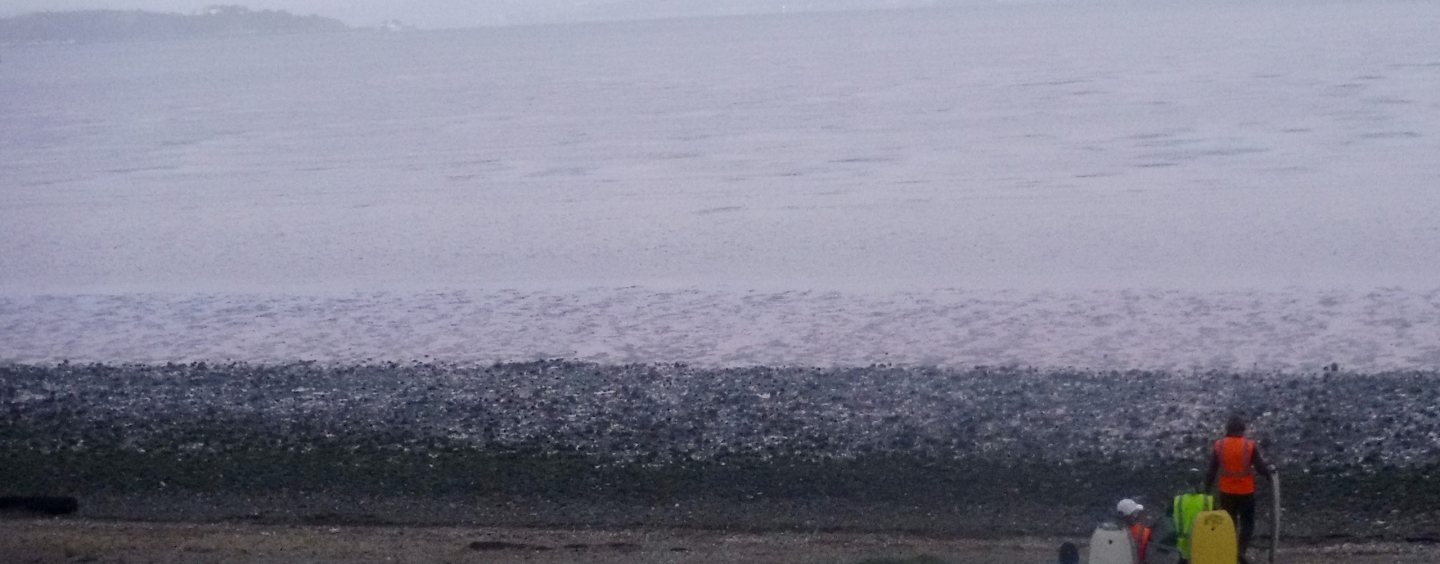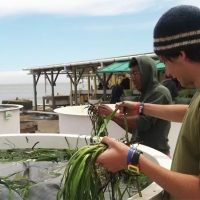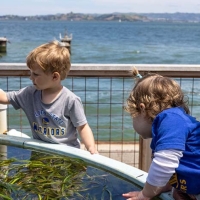Moonrise over Giant Marsh: New Monitoring Data from Two-Year-Old Supershore Project

Kathy Boyer is used to getting up in the dark so she can slide across the mudflats into the Bay at first light. But this past May, she got a once-in-a-decade treat. As the professor from SF State’s Estuary & Ocean Science Center aimed her boogie board at some two-year-old eelgrass beds growing off the Richmond shoreline, the Super Flower Blood Moon rose in the blue field of the western sky.
“It’s hard to get up at 4 a.m. but if I wasn’t doing this work, I would have missed the eclipse,” said Devon Wallace, a student of Boyer’s and a recent SF State graduate, who was enjoying the chance to get in some field experience after a year grounded by coronavirus restrictions. Indeed few of members of the field crew complained of the wee-hours wake up required to participate in a low-tide eelgrass planting at Richmond’s Giant Marsh. The eelgrass is one ingredient in the region’s biggest, most complex experiment in shoreline restoration with climate change in mind to date.


